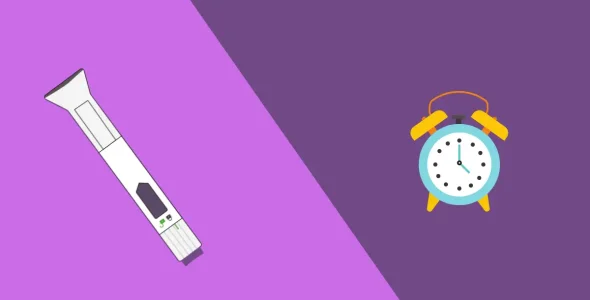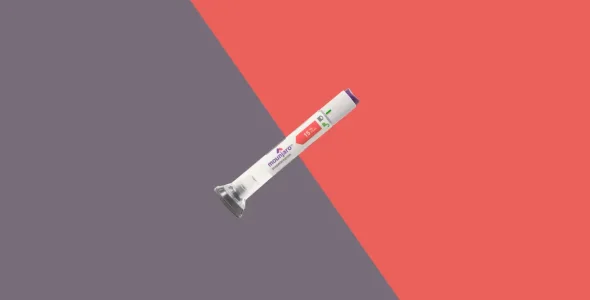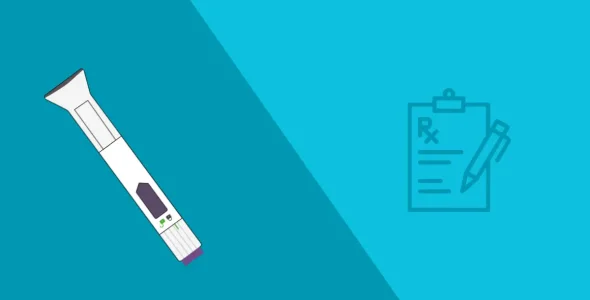Mounjaro maintenance dose: Everything you need to know
Reached your target A1C or weight loss goal with Mounjaro? The real challenge begins now. Discover why most patients need to adjust their maintenance dose within 6 months—and how to optimize yours for lasting results.
Key highlights
- Mounjaro is a dual receptor agonist that occupies both GLP-1 and GIP receptors and mimics their activity to control blood sugar levels and suppress appetite. The medication is approved for type 2 diabetes and is also used as an off-label medication for weight management.
- Mounjaro maintenance dose is a weekly dose that you continue to inject for the long term to maintain your blood sugar levels and body weight (off-label).
- The maintenance Mounjaro dose typically ranges from 5 mg to 15 mg, depending on how your body responds to the medication. Most people reach the maintenance dose after 3-4 months of the titration phase.
- Your healthcare provider can increase the dosage if the results reach a plateau or your HbA1c is greater than 7%. They may also lower the dosage if you experience any of the side effects of Mounjaro.
- Mounjaro is contraindicated for patients who have a history of thyroid cell tumors, especially medullary thyroid carcinoma, and endocrine disorders such as MEN 2 syndrome.
Mounjaro is an injectable prescription medication that contains tirzepatide as an active ingredient. The medication is injected once weekly on the same day each week by using a prefilled Mounjaro pen. Mounjaro acts as a dual agonist at glucose-dependent insulinotropic polypeptide (GIP) and glucagon-like polypeptide-1 receptors. This medication is FDA-approved for maintaining blood sugar levels in patients with type 2 diabetes mellitus (T2DM). While not officially approved as a weight loss treatment, some healthcare providers may prescribe it off-label for weight reduction.
Maintaining blood sugar level and keeping your weight off with the Mounjaro maintenance dose is one of the biggest challenges. Taking the medication consistently along with healthy lifestyle modifications can help you get the desired results. The maintenance phase of Mounjaro involves continuing with a dose that helps sustain blood sugar control and weight loss after reaching your target goals. The maintenance dose typically ranges from 5 mg to 15 mg once weekly, depending on individual response and tolerance. It usually takes 4 months or more to reach the maintenance phase. The FDA-approved maintenance doses of Mounjaro are 5 mg, 10 mg, and 15 mg.
In this article, you will learn about the maintenance doses of Mounjaro, how the dose is determined, how long you can stay on the maintenance dose, and how using the optimal maintenance dose is helpful for your ongoing health journey.
From starting dose to maintenance dose
Mounjaro is the brand name medication of tirzepatide. The medication is available in liquid form in a vial or a pre-filled pen, which is administered subcutaneously (under the skin). Mounjaro is known for its dual mechanism of action (activates GIP and GLP-1 receptors simultaneously), which makes it significantly more effective than other GLP-1 medications, such as semaglutide and liraglutide.
The starting dose
The starting dose of Mounjaro is 2.5 mg, which is administered once weekly for the first 4 weeks. It is not recommended to administer this medication twice a week.
Your healthcare provider will adjust the Mounjaro dosage every 4 weeks. They will assess your blood sugar level, glycated hemoglobin (HbA1c), weight changes, and side effects and adjust Mounjaro dosage accordingly.
The purpose of the initial Mounjaro 2.5 mg dose is to allow your body to become accustomed to the medication and minimize side effects. The benefits of starting a low dose of Mounjaro 2.5mg are:
- Starting at a low dose helps your body to adjust and avoid gastrointestinal side effects such as nausea, vomiting, diarrhea, and constipation, which are more common at the beginning of the treatment with Mounjaro.
- The starting 2.5 mg dose is generally used for the initiation of treatment and not for glycemic control. This dose is not strong enough to achieve the full therapeutic effect. It is just a starting point. Your doctor will escalate the dosage gradually according to your body’s tolerance.
- The initial 2.5 mg dose prepares you for dose escalation. After 4 weeks, the dose is increased to 5 mg once weekly.
The titration phase: Gradual dose escalation
Titration is defined as slowly increasing or adjusting the dose of Mounjaro over time to find the dose that works best for maintaining your blood sugar levels with fewer side effects.
The recommended starting dose of Mounjaro is 2.5 mg once weekly. During the titration phase, your healthcare provider adds 2.5 mg increments to existing doses. This way, after the first 4 weeks on the starting dose (2.5 mg), the dose is typically increased to 5 mg once a week for the next 4 weeks.
If your blood sugar levels remain uncontrolled, your doctor may continue to increase the dose by 2.5 mg every 4 weeks, depending on how your body responds and tolerates it.
This step-by-step increase in dose is called dose titration, which helps determine the most effective dose with the least gastrointestinal side effects.
The standard titration schedule of Mounjaro is as follows:
| Weeks | Dose | Frequency |
|---|---|---|
| 1-4 | 2.5 mg (recommended starting dose) | Once weekly |
| 5-8 | 5 mg | Once weekly |
| 9-12 | 7.5 mg | Once weekly |
| 13-16 | 10 mg | Once weekly |
| 17-20 | 12.5 mg | Once weekly |
| 21+ | 15 mg | Once weekly |
Your healthcare provider will guide you on your dose adjustments. They will monitor your body’s response after the administration of the first dose and see whether you experience any side effects, such as nausea, vomiting, diarrhea, abdominal discomfort and constipation.
They will adjust your treatment plan based on your progress and how your body tolerates the medication. They may keep you at your current dose for a longer period or increase it gradually. If you experience any side effects that persist or worsen over time, consult your healthcare professional. They will reduce the dosage or delay the escalation for the next 4 weeks. After 4 weeks, they will reassess your condition and decide on the treatment plan.
Your healthcare provider will ensure the safety of your health. They help avoid complications and ensure that dose changes are gradual and adjusted according to your body’s response. Moreover, your dietitian or nutritionist will also encourage you to stick to a healthy diet plan.
Mounjaro is available as an injection pen in the following dosage strengths:
- 2.5mg (starting dose of Mounjaro)
- 5mg
- 7.5mg
- 10mg
- 12.5mg
- 15mg (maximum dose)
Reaching your target maintenance dose
Reaching your target maintenance dose is not an overnight process. It is a gradual process that helps your body adjust to the medication and reduces the risk of gastrointestinal side effects. Maintenance dose is not always the maximum available dose; it is the best and effective dose for you, and can be in the range of 5 mg to 15 mg.
Typically, the approved maintenance doses of Mounjaro are 5 mg, 10 mg, and 15 mg. The 7.5 mg and 12.5 mg Mounjaro doses are considered transitional doses that your healthcare provider may prescribe during the titration phase or for off-label use for weight management.
However, in some cases, patients respond well to 7.5 mg and 12.5 mg weekly doses. Your healthcare provider may prescribe these doses off-label for maintenance.
The maximum maintenance dose of Mounjaro is 15 mg weekly. Never exceed this limit to avoid potential side effects.
What is a maintenance dose?
A maintenance dose is the ongoing dosage of medication required to maintain a desired drug concentration in the body.
The maintenance dose is the highest dosage you will take to maintain glycemic control and weight loss after reaching your goal.
The maintenance dose is used long-term to maintain these results. It can be 5 mg, 10 mg, or 15 mg once weekly, depending on which dose your body achieves targeted blood sugar control.
Achieving optimal glycemic control is a big achievement. Most patients stop taking Mounjaro when they reach their target, resulting in reversal of health benefits achieved with Mounjaro. This is where they need a clear understanding of their medications and diet plans from a healthcare provider.
Therefore, if you adhere to the correct maintenance dose and regular follow-up visits with your healthcare provider, you can effectively maintain glycemic control and keep your weight off.
The purpose of a Mounjaro maintenance dose
Staying on a maintenance dose of Mounjaro is crucial for maintaining your blood sugar and body weight.
The importance of the Mounjaro maintenance dose is essential for long-term health benefits. Once you reach a dose that is well-suited for you, which keeps your blood sugar level stable and your appetite controlled, your doctor may make it your long-term maintenance dose.
The purpose of the Mounjaro maintenance dose is as follows:
1. Sustaining the weight loss
If your healthcare provider has prescribed Mounjaro as an off-label medication for long-term weight loss, it is essential to continue taking the maintenance dose as prescribed to keep your weight off. The Mounjaro treatment will help you prevent weight regain, which is a common challenge after initial weight loss.
2. Appetite control
Mounjaro works on hormones that regulate appetite and hunger, as well as reduce cravings. The medication affects the hunger control center of the brain to suppress appetite and reduce hunger pangs.
3. Glycemic control (for type 2 diabetes)
Mounjaro helps maintain stable blood sugar levels. It works by:
- Improving the insulin sensitivity
- Increasing the insulin release from beta cells of the pancreas after food intake
- Reduce the release of sugar by reducing glucagon secretion
- Slows down the stomach emptying and prevents sudden spikes in sugar levels after the meal
4. Metabolic benefits
Mounjaro helps lower cholesterol and triglyceride levels in the body and reduces the risk of cardiovascular disease. The medication has also been shown to reduce blood pressure in patients with type 2 diabetes.
Determining your optimal maintenance dose
The maintenance Mounjaro dose varies from person to person depending on their health condition, blood sugar levels, tolerability to side effects, and body weight.
Before starting any diabetes or weight loss medication, always have an open communication with your healthcare provider. Discuss your weight management goals if you are using Mounjaro as an off-label medication for weight management.
Some factors can influence the maintenance dose, including:
Individual response and effectiveness
Your body’s response to medication plays a crucial role in determining the maintenance dose of Mounjaro. Some individuals respond well to lower doses of Mounjaro and achieve the desired effect earlier. Others may require higher Mounjaro doses and take longer to reach an effective maintenance dose.
Side effects tolerance
Side effects also affect the maintenance dose. If you experience severe and persistent side effects, your healthcare provider will adjust the dose accordingly. They may reduce your Mounjaro dose or delay the escalation time (in the titration phase).
Blood sugar control goals
Your prescriber will adjust your maintenance dose depending on your blood glucose and glycated hemoglobin (HbA1c) levels. HbA1c is a measure of the average blood sugar level in the previous 3 months. Your doctors aim to keep your HbA1c below 7% in type 2 diabetes. They will adjust the maintenance dose when you achieve stable blood sugar levels and an HbA1c level below 7%. If your HbA1c is greater than 7% or you experience fluctuations in blood glucose levels, the dosage will be increased.
Weight loss goals
The maintenance Mounjaro dose also depends on the individual’s weight loss goals, when using the medication off-label for weight management. Individuals with a higher BMI may need higher doses and more time to achieve significant weight loss. In contrast, individuals with comparatively lower BMI may achieve desired weight loss at lower doses and earlier.
Overall health and comorbidities
If you have any comorbidities, your healthcare professional will adjust the dosage accordingly. Mounjaro should not be used along with oral contraceptives, during pregnancy, and lactation. For patients with renal impairment and liver problems, dosage adjustment is typically not required. However, if you have a history of thyroid tumors such as medullary thyroid carcinoma (MTC) or any endocrine problem like MEN 2 syndrome (multiple endocrine neoplasia type 2), the medication is contraindicated. If you have a history of any gallbladder disease or pancreatitis, inform your healthcare provider before using the medication.
| Clinical trial/Research study | Mounjaro dose | Time period | Effectiveness in diabeties type 2 (HbA1c reduction) | Weight reduction |
|---|---|---|---|---|
| Phase 3 trial | 5 mg | 40 weeks | 2.01% | 1.9 Kg |
| Phase 3 trial | 10 mg | 40 weeks | 2.24 % | 3.6 Kg |
| Phase 3 trial | 15 mg | 40 weeks | 2.3 % | 5.5 Kg |
| SARMOUNT-1 | 5 mg | 72 weeks | - | 16 % |
| SARMOUNT-1 | 10 mg | 72 weeks | - | 21 % |
| SARMOUNT-1 | 15 mg | 72 weeks | - | 22.5 % |
| SURPASS-1 | 5 mg | 40 weeks | 1.91 % | 6.3 % |
| SURPASS-1 | 10 mg | 40 weeks | 1.93 % | 7.1 % |
| SURPASS-1 | 15 mg | 40 weeks | 2.11 % | 8.8 % |
| SURPASS-2 | 5 mg | 40 weeks | 0.15 % | 1.9 kg |
| SURPASS-2 | 10 mg | 40 weeks | .39 % | 3.6 kg |
| SURPASS-2 | 15 mg | 40 weeks | .45 % | 5.5 kg |
| SURPASS-3 | 5 mg | 52 weeks | .59 % | 9.8 kg |
| SURPASS-3 | 10 mg | 52 weeks | .86 % | 13 kg |
| SURPASS-3 | 15 mg | 52 weeks | 1.04 % | 15.5 kg |
| SURPASS-4 | 5 mg | 52 weeks | .80 % | 9 kg |
| SURPASS-4 | 10 mg | 52 weeks | .99 % | 11.4 kg |
| SURPASS-4 | 15 mg | 52 weeks | 1.14 % | 13.5 kg |
| SURPASS-5 | 5 mg | 40 weeks | 1.24 % | 7.1 kg |
| SURPASS-5 | 10 mg | 40 weeks | 1.53 % | 9.1 kg |
| SURPASS-5 | 15 mg | 40 weeks | 1.47 % | 10.5 kg |
What to expect on maintenance therapy
According to Eli Lilly, 3 out of 4 patients with diabetes reached HbA1c under 7% and maintained it when results were measured after 40 and 52 weeks. In these studies, approximately 75% to 90% of the patients taking Mounjaro experienced a reduction in A1C level below 7%. The initial HbA1c levels, on average, ranged from 7.9% to 8.6%. Moreover, patients lost up to 12 lbs (with a 5 mg weekly Mounjaro dose) and 25 lbs (with a 15 mg Mounjaro dose).
You can typically expect similar results with Mounjaro if used in combination with lifestyle modifications, such as a low-calorie diet and increased physical activity. However, individual results may vary depending on your body’s response.
Your healthcare provider will assess your condition and guide you on the duration of maintenance doses.
How long do people stay on a Mounjaro maintenance dose?
Most patients stay on a Mounjaro maintenance dose indefinitely, as long as the dose is effective and well-tolerated. Obesity is a chronic illness that requires long-term management.
Usually, there is no exact date or timeline for how long you will need to stay on the Mounjaro maintenance dose. Many patients remain on the Mounjaro maintenance dose for years to maintain the results, especially those who tend to regain weight after stopping Mounjaro. Stopping the Mounjaro dose suddenly or too early can often lead to weight regain and various health issues, such as high blood pressure and high blood sugar levels.
However, your healthcare provider may adjust or discontinue Mounjaro if you experience severe side effects that are unmanageable or if you achieve and maintain weight loss without taking the Mounjaro maintenance dose.
In a clinical study published in JAMA, 670 adults with obesity (not diabetes) were involved. Participants lost 20.9% of their average body weight after 36 weeks of the maximum tolerated Mounjaro dose. After the next 52 weeks, people who switched from Mounjaro to a placebo experienced a weight regain of 14% of their body weight. In contrast, those who stayed on the Mounjaro dose lost an additional 5.5% of their body weight. This study suggests that Mounjaro should be taken for a longer period to avoid weight regain and to maintain glycemic control.
Preventing weight regain
After losing significant weight, your body naturally activates the physiological response to regain the lost weight. These include a few hormonal changes, which increase ghrelin (a hunger hormone) and decrease leptin (a satiety hormone). This can lead to increased hunger and a reduced feeling of fullness, ultimately resulting in weight gain.
These changes also affect your metabolism as your body tries to conserve energy during rest and the active state. This slower metabolism results in weight regain even if your calorie intake is the same as before.
Mounjaro counteracts these changes by mimicking the effect of GLP-1 and GIP hormones that are involved in regulating your appetite and blood sugar levels. This medication reduces your appetite, increases the feeling of fullness, improves insulin sensitivity, and maintains blood glucose levels.
The efficacy of Mounjaro increases when combined with healthy lifestyle changes, such as a low-calorie diet plan, regular exercise, and healthy sleep habits.
When can you stop or taper off Mounjaro?
If you want to stop Mounjaro, consult with your healthcare provider first. They will guide you on how to gradually reduce or taper off your Mounjaro dose, rather than stopping it suddenly. They will also suggest a diet plan and recommend an exercise schedule to maintain results even after tapering off Mounjaro. They will also monitor your progress regularly
Some patients maintain their weight loss after stopping Mounjaro or other weight loss injections like Wegovy by sticking to a healthy lifestyle, including balanced eating and regular exercise. However, not everyone can sustain the results without support, as hunger and metabolism often return to pre-treatment levels after stopping the medication.
If you want to taper off Mounjaro, never stop it suddenly. Always taper off the medication gradually under medical supervision to mitigate the potential side effects and avoid regaining weight.
The following are a few conditions when you can stop or taper off Mounjaro in coordination with your healthcare provider:
- Intolerable side effects: If side effects become unmanageable, even at lower doses, your healthcare provider may suggest that you stop the medication.
- Lack of efficacy: If the medication stops working effectively for weight management or glycemic control (e.g., not losing 5% of starting weight after 6 months on maintenance dose), even after using the highest Mounjaro dosage, your doctor may stop the medication or switch to another GLP-1 medication.
- Medical reasons: If you develop any medical illness such as thyroid tumors, MEN 2 syndrome, plan to conceive, or become pregnant, or you are breastfeeding, your doctor will stop the medication. If you develop acute kidney injury, pancreatitis, gallstones, or any other intolerable side effects after taking Mounjaro, your doctor may stop or taper off the medication.
- Individual choice: Ultimately, it is the individual’s own decision whether they want to continue Mounjaro or stop it. If you want to stop Mounjaro, you can decide on doing so after discussing with your healthcare provider.
The importance of continued healthy lifestyle habits
Mounjaro is an FDA-approved medication for type 2 diabetes when used alongside lifestyle changes and modifications. The FDA recommends using the medication in combination with a low-calorie diet and exercise. If you have a sedentary lifestyle and do not follow any dietary restrictions, you might not achieve the desired results.
Mounjaro binds to GLP-1 and GIP receptors to suppress appetite and manage blood sugar levels. When you discontinue Mounjaro, your blood sugar levels spike, and your appetite is no longer suppressed, resulting in frequent food cravings. If you do not follow a balanced diet and a healthy lifestyle, you are more likely to regain the weight you have lost. Therefore, these habits become more critical when you discontinue the medication.
Managing Mounjaro maintenance
Here are a few steps that help you manage the Mounjaro maintenance dose.
1. Injection schedule tips
Staying consistent with your medication and treatment plan is key to your health. Take your dose on the same day each week to maintain stable blood sugar levels and achieve the desired results, maximizing the outcome.
If you miss your Mounjaro dose, you can take it within 4 days (96 hours) as early as possible. If the skipped dose was more than 4 days ago, skip the missed dose and resume your next dose on the regularly scheduled day. Don’t double the dosage when administering the next dose. If you are unsure, consult with your healthcare provider for guidance.
If you want to change your Mounjaro injection day, wait for 3 days between your last injection day and the new one. Once 3 days have passed, you can choose the new injection day that suits your routine. Avoid injecting two Mounjaro doses without spacing of at least 3 days, as this can increase the risk of side effects. Always consult with your healthcare professional before making any changes to your treatment plan.
2. Side effect management
Many people tolerate the Mounjaro maintenance well, as their body has already become used to the medication. However, some patients may experience continued side effects on the maintenance dose, like nausea, diarrhea, constipation, and stomach pain. Here are a few tips to manage these side effects.
- Eat smaller and more frequent meals to avoid nausea and stomach discomfort
- Remain hydrated if you are experiencing constipation, diarrhea, or vomiting.
- Avoid consuming foods that trigger your gastrointestinal symptoms, such as oily and fatty foods.
Consult with your healthcare provider if you are experiencing severe and persistent side effects.
3. Dietary adjustments
Making small dietary changes can significantly enhance the effect of Mounjaro and reduce potential side effects. Although there is no standard Mounjaro diet plan, adopting certain healthy habits and consuming healthy foods can complement the effects of Mounjaro. This approach will help reduce blood sugar levels and body weight effectively.
Take a healthy and nutritious diet rich in protein and dietary fiber. Eat in smaller portions by tracking your intake with the help of carbohydrate counting and a plate method. Carbohydrate counting means keeping track of the carbohydrates you take in your meals. The plate method divides the 9-inch plate into three sections:
- Proteins, including soy products, fish, dairy products, and lean meat, should make up one quarter of your plate.
- Non-starchy vegetables such as green vegetables, green beans, pepper, and carrot should make up the second quarter of your plate.
- High-fiber carbohydrates, such as whole grains, brown rice, fruits, and beans, should make up the third quarter of your plate.
4. Activity recommendations
While taking a Mounjaro maintenance dose, staying active can significantly enhance the effectiveness of Mounjaro in controlling blood sugar and managing weight. There are no strict exercises. Aim for at least 150 minutes of aerobic exercise (such as swimming and cycling) per week to stay active.
Always start slowly if you are a beginner. Even short walks after meals can significantly improve your blood glucose levels.
5. Monitoring protocols
Always keep in touch with your healthcare provider if you are taking Mounjaro. Regular monitoring ensures that the medication is well tolerated and effective. Regularly visit your healthcare provider to review your process and adjust the dosage as needed.
Keep monitoring your weight and blood sugar levels. Keep a record of your Mounjaro doses to avoid duplicating or missing doses. Discuss with your doctor if you notice any changes in your appetite or experience any side effects.
6. Understanding the Mounjaro pen
Mounjaro pen is available as a prefilled injection with a fixed dose. You cannot manually change the dose. As your treatment progresses, you will receive a new pen for each dose strength, which are 2.5 mg, 5 mg, 7.5 mg, 10 mg, 12.5 mg, and 15 mg.
Keep the unused pen in a refrigerator at 2°C to 8°C. After using the pen, you can store it at room temperature (up to 30°C) for up to 21 days. Do not freeze Mounjaro or use the medication if it has been frozen.
After using the pen, dispose of it in a sharp disposal container. Never throw a used pen in the household trash. Do not share your pen with anyone.
Maintenance dose adjustments
Your healthcare provider may adjust your Mounjaro maintenance dose based on how your body responds. Your doctor may increase the Mounjaro maintenance dose:
- If the improvement in blood sugar level and weight loss has plateaued for several days or weeks, or your HbA1c is above 7% even after taking the medication regularly.
- If the medication is well tolerated and you are not experiencing any side effects, even on higher doses.
Your healthcare provider may decrease the Mounjaro maintenance dose:
- If you are experiencing severe and persistent side effects such as nausea, vomiting, and diarrhea.
- If you are experiencing a health issue that requires a lower Mounjaro dose.
Never change the Mounjaro dose on your own; always consult with your doctor to avoid potential side effects.
Cost considerations
The list price of Mounjaro according to its manufacturer, Eli Lilly, is $1,079.77 per fill, which contains 4 pre-filled pens. The estimated annual cost of Mounjaro is approximately $12,900 without insurance. At local pharmacies, Mounjaro prices range from $1,000 to $1,300 per fill or more. According to GoodRx, the following are the retail prices of Mounjaro at retail pharmacies.
| Pharmacy | Prices |
|---|---|
| Walgreens | $1,297.09 |
| Walmart | $1,296.93 |
| CVS | $1,274.03 |
| Costco | $1,429.99 |
Most insurance companies provide insurance coverage for Mounjaro when prescribed for its FDA-approved indication (type 2 diabetes). If you use the medication off-label for weight management, insurance will typically not cover it. For diabetes, you won’t have to pay the list price if your insurance plan covers Mounjaro. However, the amount you have to pay depends on your insurance plan, copays, and yearly deductibles.
Medicare coverage
If you are taking Mounjaro to control your blood sugar levels, Medicare may provide insurance coverage with prior authorization (PA) and step therapy. However, if you are taking Mounjaro for weight loss purposes, Medicare does not offer insurance coverage due to the Medicare Modernization Act (MMA) which prohibits coverage of weight loss medications. To check your insurance plan’s formulary (list of covered drugs), you can visit Medicare’s plan finder tool.
Medicaid coverage
Medicaid coverage for Mounjaro varies by state. To get Medicaid insurance coverage, you can contact your state’s Medicaid office to determine whether Mounjaro is covered. To qualify for Medicaid insurance, you have to meet specific criteria. According to the KFF survey, Medicaid prescription drug plans cover Mounjaro in the following states.
- Texas
- Hawaii
- California
- Delaware
- New Hampshire
- Rhode island
- Minnesota
- Pennsylvania
- Louisiana
- South Carolina
- Mississippi
- Connecticut
- Wisconsin
Mounjaro Savings Card
Eli Lilly, the manufacturer of Mounjaro, offers a Mounjaro Savings Card program. If you are commercially insured and meet the eligibility criteria, you can pay as little as $25 for a 1-month, 2-month, or 3-month prescription.
To be eligible for the Mounjaro Saving Card, you will need to meet the following requirements:
- You must be a resident of the U.S. or Puerto Rico
- You should have a valid prescription for type 2 diabetes from a licensed healthcare professional
- You must be 18 years of age or older
- You must have commercial or private insurance
- You must not be enrolled in Medicare, Medicaid, TRICARE, CHAMPUS, the VA, DoD programs, Medigap, or any other federally or state-funded healthcare plan.
You can check further details about Eli Lilly’s savings program by going to the official website.
Mounjaro maintenance dose FAQs
Can you stay on 5 mg indefinitely?
It is not necessary to stay on 5 mg indefinitely. Your healthcare prescriber will decide on your titration schedule and maintenance dose.
Is 15mg always better than 10mg?
No, 15 mg is not always better than 10 mg. If you achieve target glycemic control, maintain your blood sugar levels, or get desired weight loss results with 10 mg, there is no need to switch to a 15 mg weekly dosage. However, if you do not achieve the desired results with 10 mg, 15 mg may provide better results.
Is 7.5 mg or 12.5 mg a maintenance dose?
7.5 mg and 12.5 mg are not recommended maintenance doses. However, your healthcare professional may recommend these doses during transitional phases when adjusting your Mounjaro dosage. Additionally, they may also recommend these doses off-label for blood sugar control or weight management, if needed.
What happens if you stop maintenance doses?
If you stop maintenance doses without consulting a healthcare provider, you may experience spikes in blood glucose levels, weight regain, increased hunger cravings, and a higher appetite.
The SARMOUNT 4 clinical trials show that Mounjaro should be taken consistently to maintain glycemic control and weight. Cessation of the treatment may result in weight regain after a few weeks.
How does maintenance differ for weight loss vs diabetes?
Typically, most patients achieve optimal blood sugar and glycated hemoglobin levels with lower maintenance doses of Mounjaro (5 mg and 10 mg), although some patients may need 15 mg for diabetes.
When Mounjaro is used off-label for weight loss, patients typically require higher maintenance doses (10 mg and 15 mg weekly) to achieve significant weight loss. Zepbound is a better choice for weight management as the medication is specifically indicated for weight loss in obese and overweight patients.
Can you alternate between doses?
No, you can not alternate between doses on your own. Your healthcare provider will adjust or alternate doses as needed. They may lower the dosage if you experience side effects, or increase the dosage if you are not achieving satisfactory blood sugar control or have reached a weight loss plateau.
Will I still lose weight on a maintenance dose?
The maintenance dose is generally prescribed to sustain the effect of the medication. The Mounjaro maintenance dose is taken to help maintain weight loss. You may not experience significant weight loss with a maintenance dose. However, it varies among individuals, depending on their body’s response. Some patients may experience weight changes with the maintenance dose.
What happens if I stop Mounjaro abruptly?
If you stop Mounjaro abruptly, you may experience fluctuations in blood sugar levels, increased appetite, and frequent hunger cravings due to shifts in hormonal signals that control appetite. You may regain the lost weight after a few weeks.
In addition, you may also experience gastrointestinal issues such as diarrhea and nausea, fatigue, emotional instability, and reversal of health benefits if you abruptly stop the medication.
Can I go down on my dose for maintenance?
You cannot go down on your Mounjaro dose for maintenance on your own. Your healthcare professional will decide which dose is suitable as a maintenance dose. Typically, your doctor will recommend a maintenance dose at which your body achieves optimal blood sugar control and is well tolerated.
Do I need to be on the highest dose (15 mg) for maintenance?
It is not necessary to be on the highest Mounjaro dose for maintenance. You may achieve blood sugar control and weight management at lower doses of 5 mg or 10 mg once weekly, depending on your body’s response to the medication.
Conclusion: Finding the optimal Mounjaro maintenance dose
Mounjaro maintenance dose is the optimal tolerable dose that can be used long-term to maintain your body sugar levels and weight loss. This dose typically ranges from 5 mg to 15 mg weekly based on your body tolerance. The recommended maintenance doses are 5 mg, 10 mg, and 15 mg. The 7.5 mg and 12.5 mg doses are typically used as transitional doses. Your healthcare provider may prescribe these doses off-label, if needed.
You cannot stop Mounjaro suddenly. If you plan to taper off the medication, consult with your healthcare professional first to discuss your concerns. If you experience any side effects that are affecting your quality of life, discuss them with your provider. They will adjust the dosage accordingly or switch the medication if needed.
If your weight loss has reached a plateau or your blood sugar levels are still too high, your doctor may increase the Mounjaro dose. Staying in contact with your doctor is critical for long-term results with this medication.






